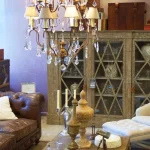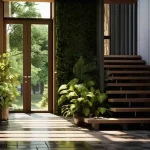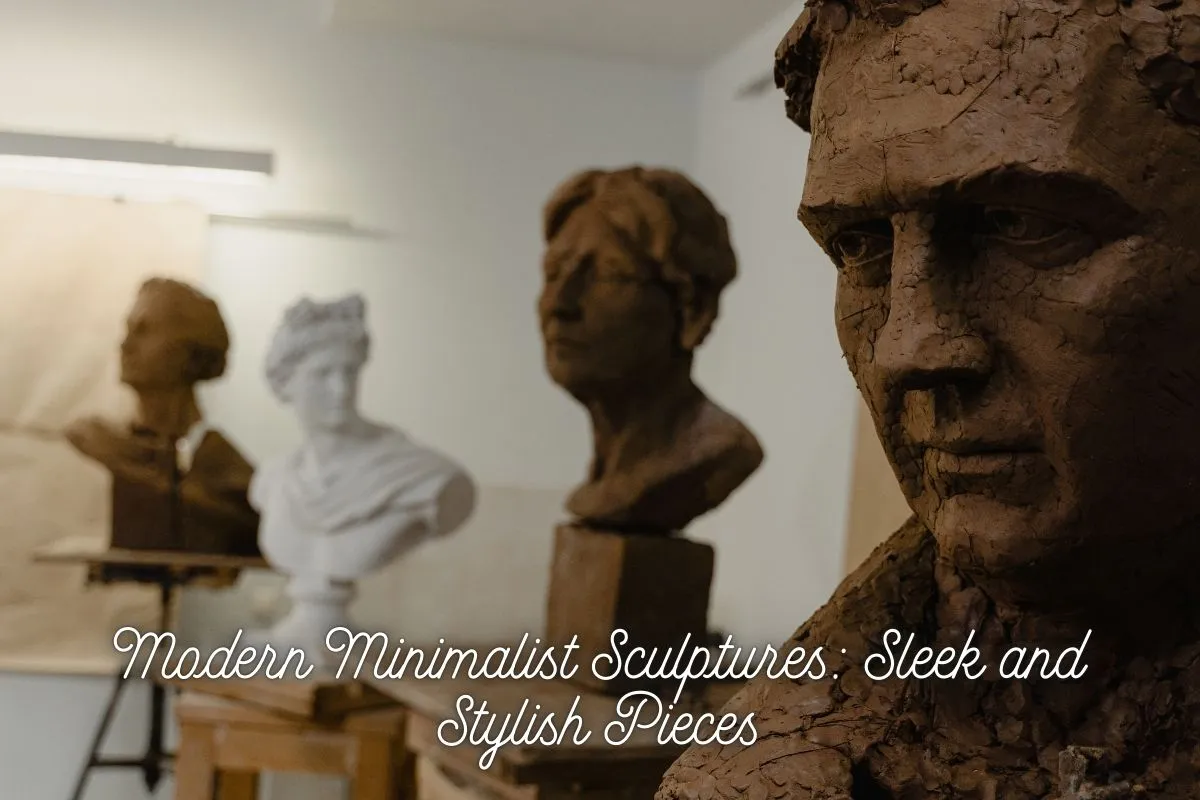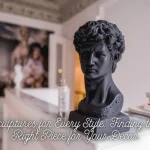When I was a child, I remember visiting an art museum for the first time. Among the colorful paintings and intricate statues, one piece stood out—a simple, sleek metal box sitting in the middle of the room. It wasn’t flashy or detailed, but it made me stop and stare. Years later, I learned it was a minimalist sculpture. That moment sparked my fascination with modern minimalist sculptures, where less truly becomes more.
Minimalist art is all about stripping away the unnecessary. It focuses on shapes, colors, and materials in their purest forms. Modern minimalist sculptures, in particular, are a celebration of simplicity. They invite us to see beauty in the ordinary and find meaning in the unadorned.
In this article, we’ll explore the world of modern minimalist sculptures. We’ll hear from experts, dive into their history, and discover why these works continue to captivate audiences worldwide.
Table of Contents
ToggleWhat Are Modern Minimalist Sculptures?
Modern minimalist sculptures are three-dimensional artworks that use simple forms, clean lines, and limited materials. They often feature geometric shapes like cubes, spheres, and rectangles. The goal is to create art that feels calm, balanced, and uncluttered.
As Donald Judd, a pioneer of minimalism, once said, “A shape, a volume, a color, a surface is something itself. It shouldn’t be concealed as part of a fairly different whole.” (Source: Donald Judd Foundation)
These sculptures aren’t trying to tell a story or depict a scene. Instead, they focus on the experience of the viewer. How does the sculpture make you feel? How does it interact with the space around it? These are the questions minimalist artists want us to ask.
The History of Minimalist Sculptures
Minimalism emerged in the 1960s as a reaction to the complexity of abstract expressionism. Artists wanted to create work that was straightforward and honest. They used industrial materials like steel, glass, and concrete to make sculptures that felt modern and timeless.
One of the most famous minimalist artists, Sol LeWitt, believed that “The idea becomes a machine that makes the art” (Source: Tate Modern). This means that the concept behind the sculpture is just as important as the finished piece.
Minimalist sculptures often challenge traditional ideas of art. They don’t rely on craftsmanship or decoration. Instead, they focus on the relationship between the artwork, the viewer, and the space it occupies.
Why Minimalist Sculptures Matter
Minimalist sculptures are more than just pretty objects. They encourage us to slow down and appreciate the world around us. In a busy, chaotic world, these works offer a moment of calm and reflection.
Agnes Martin, a minimalist artist known for her serene paintings, once said, “Art is the concrete representation of our most subtle feelings” (Source: The Guggenheim Museum) This idea applies to minimalist sculptures as well. They capture emotions and ideas in a way that words can’t.
Minimalist sculptures also show us the power of simplicity. They remind us that we don’t need a lot to create something beautiful. Sometimes, less really is more.
Famous Minimalist Sculptors and Artists
Let’s take a closer look at some of the most iconic minimalist sculptures and the artists behind them.
1. Donald Judd’s Boxes
Donald Judd is one of the most well-known minimalist artists. His sculptures often feature stacks of metal or wooden boxes. These works explore the relationship between form and space. Judd believed that art should stand on its own without any hidden meanings.
2. Dan Flavin’s Light Installations
Dan Flavin used fluorescent lights to create stunning minimalist sculptures. He once said, “I knew that the actual space of a room could be broken down and played with by planting illusions of real light (electric light) at crucial junctures in the room’s composition” (Source: Dia Art Foundation) His works transform ordinary spaces into something magical.
3. Sol LeWitt’s Geometric Structures
Sol LeWitt’s sculptures are based on simple geometric shapes. He often used grids and cubes to create complex structures. His work shows how a single idea can lead to endless possibilities.
4. Carl Andre’s Floor Pieces
Carl Andre’s sculptures are often placed directly on the floor. He used bricks, tiles, and metal plates to create patterns and textures. His work challenges us to see art in unexpected places.
The Experience of Minimalist Sculptures
One of the most interesting things about minimalist sculptures is how they change depending on their placement. A sculpture in a museum might feel very different from the same piece in a park or a city square.
Robert Morris, another influential minimalist artist, explained it this way: “Simplicity of shape does not necessarily equate with simplicity of experience” (Source: The Museum of Modern Art (MoMA))
This means that even though minimalist sculptures look simple, they can create complex and powerful experiences. They invite us to interact with them, to walk around them, and to see them from different angles.
Personal Reflections on Minimalist Sculptures
I’ll never forget the first time I saw a Dan Flavin light installation. It was in a small, dark room, and the fluorescent lights cast a soft glow on the walls. I felt like I was standing inside a rainbow. It was a moment of pure joy and wonder.
Another time, I visited an exhibition of Carl Andre’s floor pieces. At first, I didn’t understand why bricks arranged in a pattern could be considered art. But as I walked across the installation, I started to notice the textures and sounds under my feet. It was like walking on a giant puzzle.
These experiences taught me that minimalist sculptures aren’t just objects to look at. They’re experiences to be felt and explored.
Why You Should Explore Minimalist Sculptures
If you’ve never paid much attention to minimalist sculptures, I encourage you to give them a try. Visit a museum or gallery and take your time with each piece. Notice how the shapes and materials make you feel. Think about how the sculpture interacts with the space around it.
As Carl Andre once said, “A thing is a hole in a thing; it is not” (Source: Artforum). This might sound confusing at first, but it’s a reminder that art is about seeing the world in new ways.
Further Reading and Resources
If you’re interested in learning more about minimalist sculptures, here are some great resources:
- “Minimalism: Art and Polemics in the Sixties” by James Meyer
This book provides a comprehensive overview of the Minimalist movement, including its key figures and philosophical underpinnings. - “Donald Judd: Specific Furniture” by Flavin Judd and Rainer Judd
This study explores Judd’s work, focusing on his minimalist sculptures and furniture designs. - “Sol LeWitt: A Retrospective” by Gary Garrels
A detailed examination of Sol LeWitt’s contributions to Minimalism and Conceptual Art, including his iconic wall drawings and sculptures. - “Agnes Martin: Her Life and Art” by Nancy Princenthal
This biography delves into Agnes Martin’s life and her minimalist approach to art, blending spirituality with geometric abstraction.
Final Thoughts
Modern minimalist sculptures are a testament to the power of simplicity. They remind us to slow down, appreciate the present moment, and find beauty in the everyday. Whether you’re an art enthusiast or a casual observer, these works have something to offer everyone.
So the next time you see a minimalist sculpture, take a moment to look at it. Let it inspire you to see the world in a new way. After all, as Agnes Martin said, art is about capturing our most subtle feelings—and sometimes, those feelings are best expressed through simplicity.
Share via:
Related posts:
 How to Hang a Tarp Like a Curtain
How to Hang a Tarp Like a Curtain
 Unveiling the Value of Jimmy Swaggart Home
Unveiling the Value of Jimmy Swaggart Home
 The Art of the Showpiece: Curating a Collection
The Art of the Showpiece: Curating a Collection
 Eco-Friendly Staircase: Sustainable Design and Materials
Eco-Friendly Staircase: Sustainable Design and Materials
 Transform Your Home with New Door Handles: A Simple Guide
Transform Your Home with New Door Handles: A Simple Guide
 Why Bathroom Mirrors Fog Up & How to Prevent It
Why Bathroom Mirrors Fog Up & How to Prevent It
 How to Build a Fence Gate That Won’t Sag
How to Build a Fence Gate That Won’t Sag



